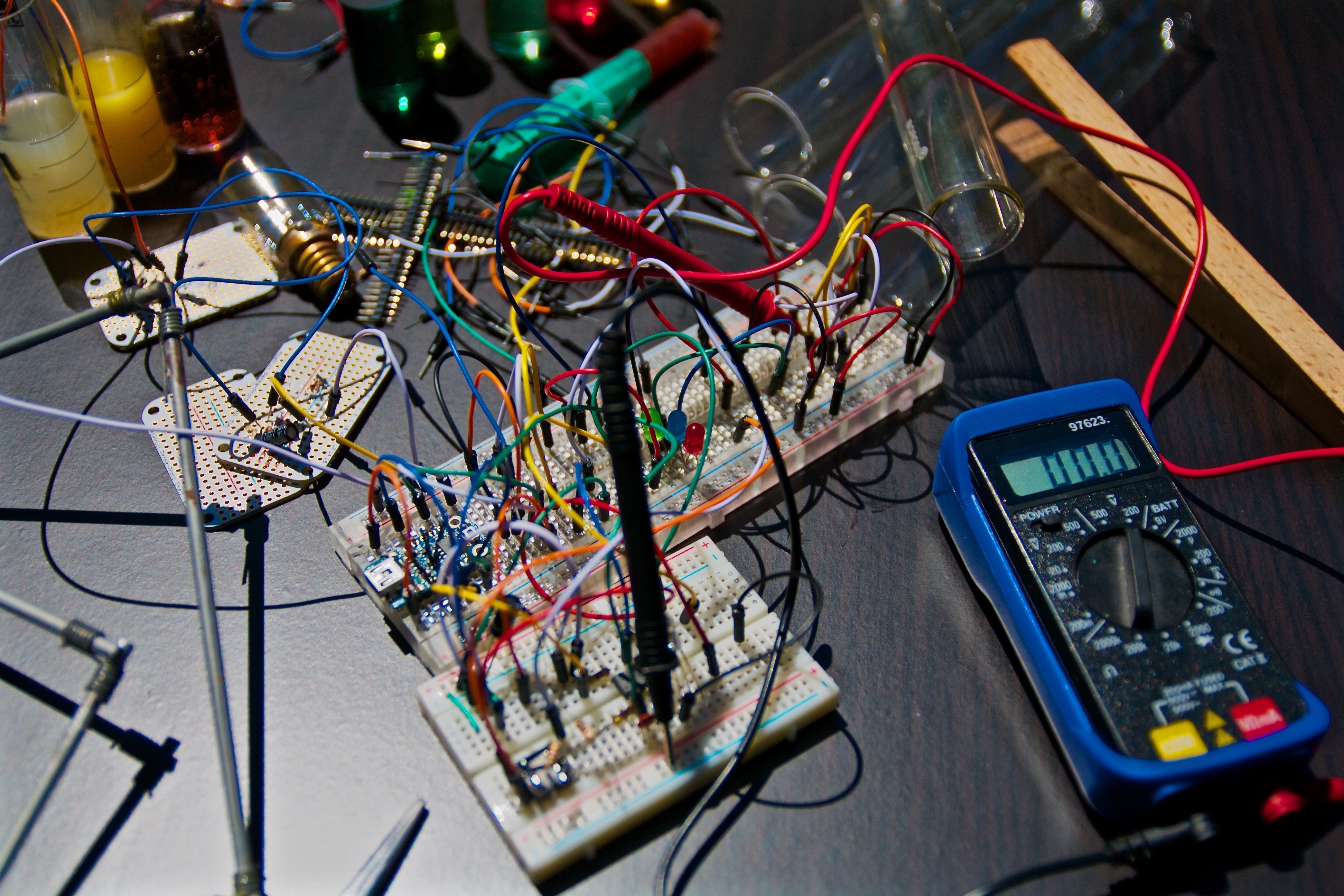Time: 2024-01-12 18:08:48View:
An FPGA prototype, or field-programmable gate array prototype, is a physical implementation of a digital system using FPGA technology. FPGAs are semiconductor devices that can be configured by the user after manufacturing, allowing for the creation of custom digital circuits. FPGA prototypes are often used in the early stages of hardware development to validate and test the functionality of a design before it is fabricated into an application-specific integrated circuit (ASIC) or other hardware implementation.
FPGA prototypes are particularly useful in the development of complex digital systems such as microprocessors, system-on-chip (SoC) designs, and other integrated circuits. By using FPGAs to create a prototype of the design, engineers can verify its functionality, performance, and compatibility with other system components. This early validation helps to identify and resolve potential issues before committing to the costly process of fabricating a custom ASIC.
Creating an FPGA prototype typically involves mapping the digital design onto the FPGA fabric, which consists of configurable logic blocks interconnected by programmable routing resources. This process may also involve integrating other components such as memory, interfaces, and peripherals to create a complete system prototype. Once the design is loaded onto the FPGA prototype, it can be tested and debugged using specialized tools and testbenches to ensure that it behaves as expected.
In addition to functional validation, FPGA prototypes can also be used for performance analysis, power estimation, and software development. They provide a flexible platform for early software development and testing, allowing software engineers to begin writing and debugging code for the target hardware even before the final ASIC is available. Overall, FPGA prototypes play a crucial role in the hardware development process, enabling engineers to iterate on their designs, identify and resolve issues early, and accelerate time-to-market for new digital systems.

An FPGA prototype works by implementing a digital design using a field-programmable gate array (FPGA) device, which can be configured and reconfigured to create custom digital circuits. The process of creating an FPGA prototype involves several key steps, starting with the mapping of the digital design onto the FPGA fabric. This mapping process involves assigning the design's logic elements, memory blocks, and other components to the configurable resources within the FPGA, such as lookup tables, flip-flops, and routing interconnects.
Once the design is mapped onto the FPGA, the prototype can be loaded with the configuration data, effectively programming the FPGA to behave as the desired digital system. This can be done using specialized design tools that generate the configuration bitstream based on the design description, or by directly programming the FPGA using a hardware programming interface. With the design loaded onto the FPGA prototype, it can be powered up and tested to verify its functionality and performance.
FPGA prototypes often include additional components such as memory, interfaces, and peripherals to create a complete system prototype. These components may be integrated into the FPGA design or connected to the FPGA prototype through external interfaces. Once the prototype is operational, it can be tested using simulation tools, testbenches, and real-world stimuli to validate its behavior and identify any potential issues.
Overall, FPGA prototypes provide a powerful platform for validating and testing digital designs, enabling engineers to identify and resolve issues early in the development process. Their flexibility, reconfigurability, and ability to mimic the behavior of custom hardware make them an invaluable tool in the development of complex digital systems.
Designing for prototyping involves creating a digital system or hardware design with the specific goal of implementing it on a prototype platform, such as an FPGA prototype. This process requires careful consideration of the target prototype platform's capabilities, constraints, and requirements. One of the key aspects of designing for prototyping is to ensure that the digital design can be efficiently mapped onto the prototype platform while maintaining its functionality and performance.
When designing for prototyping, engineers often start by selecting an appropriate FPGA device that can accommodate the size and complexity of the digital design. This involves considering factors such as the number of logic elements, memory resources, and I/O interfaces required by the design. Additionally, engineers may need to consider the speed and power requirements of the design to ensure that the selected FPGA can meet the performance targets of the prototype.
In addition to selecting the FPGA device, designing for prototyping also involves partitioning the digital design into logical modules that can be efficiently mapped onto the FPGA fabric. This may involve breaking down the design into smaller, manageable blocks that can be implemented using the resources available in the FPGA. Careful consideration of the FPGA's architecture, such as its routing resources and specialized logic elements, can help optimize the mapping of the design onto the prototype platform.
Furthermore, designing for prototyping often involves integrating additional components such as memory, interfaces, and peripherals into the digital design to create a complete system prototype. This may require interfacing with external components or integrating IP cores that provide the necessary functionality. Engineers must ensure that these components are compatible with the FPGA prototype platform and can be efficiently implemented within the design.
Overall, designing for prototyping requires a deep understanding of both the digital design and the target prototype platform. By carefully considering the capabilities and constraints of the FPGA prototype, engineers can create designs that can be efficiently implemented and validated on the prototype platform, accelerating the development and testing of new digital systems.

FPGA prototypes and emulations are both widely used in the development and validation of digital designs, but they serve different purposes and offer distinct advantages. FPGA prototypes involve implementing a digital design using field-programmable gate array (FPGA) technology, while emulations utilize specialized hardware or software to mimic the behavior of the target system.
FPGA prototypes are often used in the early stages of hardware development to validate and test the functionality of a design before it is fabricated into an application-specific integrated circuit (ASIC) or other hardware implementation. They provide a physical, real-time platform for testing the design's functionality, performance, and compatibility with other system components. FPGA prototypes offer a high degree of flexibility, allowing engineers to iterate on their designs, make changes, and re-implement them on the FPGA without the need for costly and time-consuming fabrication of custom hardware.
On the other hand, emulations are typically used for more comprehensive and detailed testing of digital designs. Emulation platforms use specialized hardware or software to model the behavior of the target system at a higher level of abstraction, often providing more extensive visibility and control over the design's internal operation. Emulations are particularly useful for verifying complex designs, performing in-depth debugging, and running extensive test suites that may be impractical to execute on an FPGA prototype.
One of the key differences between FPGA prototypes and emulations is their respective speed of operation. FPGA prototypes operate in real time, allowing engineers to test the design's behavior under real-world conditions. In contrast, emulations can operate at much higher speeds, enabling engineers to perform detailed analysis and testing of the design's performance, timing, and functional correctness.
Additionally, the level of visibility and control over the design is another differentiating factor. Emulations often provide more extensive debugging capabilities, allowing engineers to observe and analyze the internal state of the design at a higher level of abstraction. FPGA prototypes, while offering real-time operation, may have more limited visibility into the design's internal operation.
FPGA prototypes and emulations are both valuable tools in the development and validation of digital designs, each offering unique advantages. FPGA prototypes provide a flexible, real-time platform for early validation and testing, while emulations offer more comprehensive analysis and debugging capabilities at higher speeds and levels of abstraction. Depending on the specific requirements of a project, engineers may choose to utilize one or both of these approaches to ensure the successful development and validation of their digital designs.
FPGA prototypes offer several advantages and disadvantages in the development and validation of digital designs. Understanding these pros and cons is crucial for engineers when deciding whether to utilize FPGA prototypes in their projects.
One of the key advantages of FPGA prototypes is their flexibility. FPGAs can be reconfigured, allowing engineers to iterate on their designs, make changes, and re-implement them on the FPGA without the need for costly and time-consuming fabrication of custom hardware. This flexibility enables rapid prototyping and validation of digital designs, accelerating the development process and reducing time-to-market for new products.
FPGA prototypes also provide a real-time platform for testing the functionality, performance, and compatibility of a design. This real-time operation allows engineers to observe the behavior of the design under real-world conditions, making it easier to identify and resolve potential issues early in the development process. Additionally, FPGA prototypes can be used for early software development and testing, providing a platform for writing and debugging software for the target hardware even before the final ASIC is available.
However, FPGA prototypes also have some limitations. One of the main challenges is the limited capacity and performance of FPGAs compared to custom ASICs. Complex designs may exceed the resources available in an FPGA, requiring engineers to make compromises or use multiple FPGAs to accommodate the design. Additionally, the speed of operation of FPGA prototypes may be limited compared to emulations, which can operate at much higher speeds.
Another potential drawback of FPGA prototypes is the effort required to create and maintain the prototype platform. Designing and implementing a digital design on an FPGA prototype can be a complex and time-consuming process, requiring expertise in FPGA design and verification. Furthermore, as the design evolves, the prototype platform may need to be updated and modified to accommodate changes, adding to the overall development effort.
In summary, FPGA prototypes offer flexibility, real-time operation, and early validation capabilities, making them valuable tools in the development and validation of digital designs. However, they also have limitations in terms of capacity, performance, and the effort required to create and maintain the prototype platform. Engineers must carefully weigh these pros and cons when considering the use of FPGA prototypes in their projects.